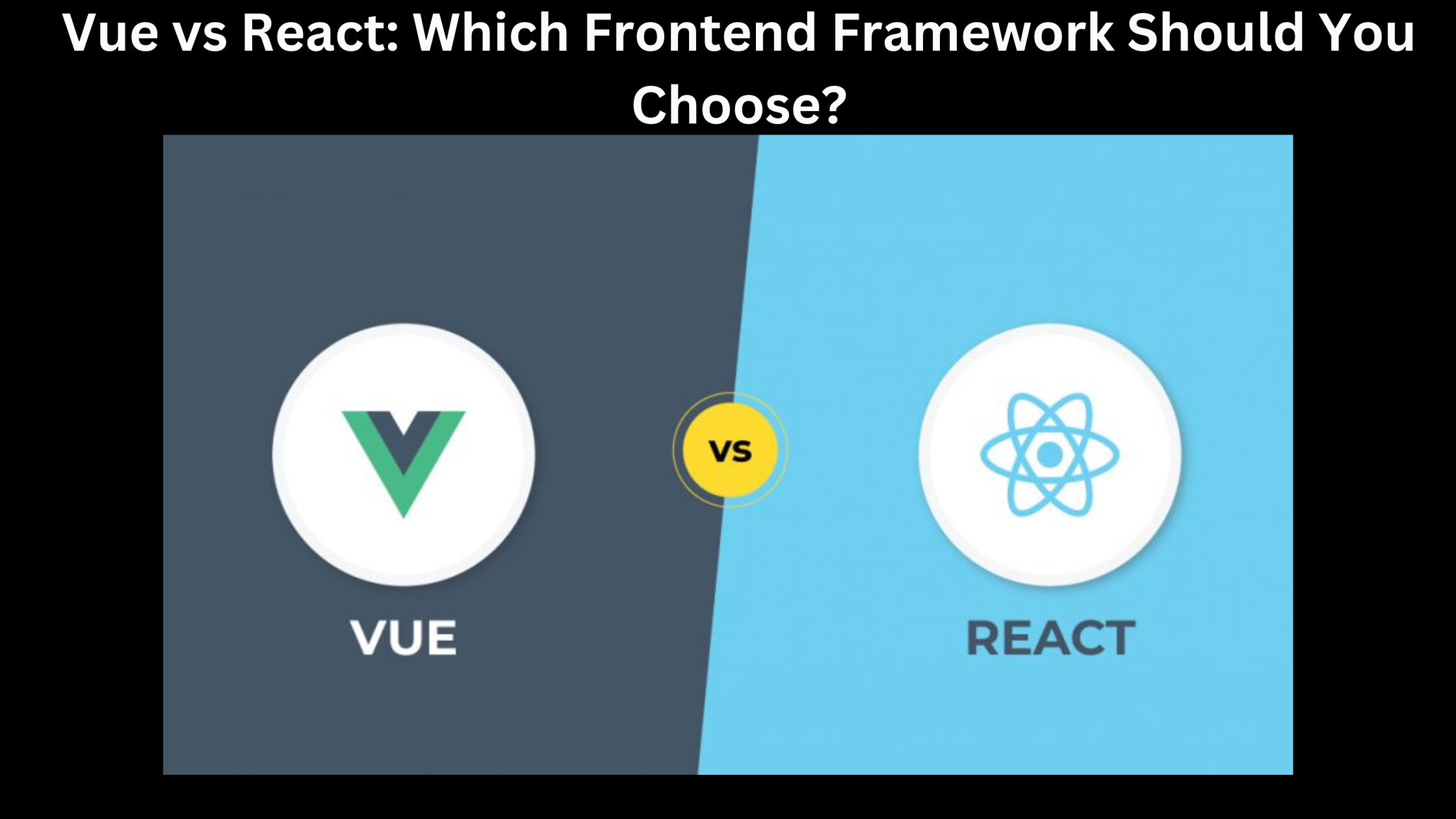Introduction
In the ever-evolving world of web development, choosing the right front-end framework is crucial for building efficient and scalable applications. Among the most popular options are Vue.js and React.js. Both frameworks offer powerful tools and capabilities, but they cater to different needs and preferences. This article delves into the key aspects of Vue and React, comparing their features, performance, learning curve, and community support to help you make an informed decision.
1. Overview of Vue.js
Vue.js is an open-source JavaScript framework for building user interfaces and single-page applications. Created by Evan You in 2014, Vue has gained popularity due to its simplicity, flexibility, and ease of integration with other projects and libraries.
Key Features of Vue.js:
- Reactivity System: Vue’s reactivity system allows developers to create dynamic and reactive user interfaces effortlessly.
- Single-File Components: Vue components encapsulate HTML, CSS, and JavaScript, making the code modular and easy to manage.
- Directive System: Vue’s directives (e.g., v-if, v-for) simplify DOM manipulations.
- Vue CLI: The Vue CLI provides a robust toolset for scaffolding and managing projects.
- Vue Router and Vuex: Vue offers official libraries for routing and state management, ensuring consistency across applications.
2. Overview of React
React.js, developed and maintained by Facebook, is a JavaScript library for building user interfaces. It focuses on the view layer of the application and emphasizes component-based architecture and declarative programming.
Key Features of React:
- Virtual DOM: React’s virtual DOM improves performance by minimizing direct manipulations of the real DOM.
- Component-Based Architecture: React promotes reusable and composable components, enhancing code maintainability.
- JSX: JSX syntax allows developers to write HTML-like code within JavaScript, streamlining the creation of UI components.
- React Hooks: Hooks (e.g., useState, useEffect) enable functional components to manage state and side effects.
- React Router and Redux: React integrates well with libraries like React Router for routing and Redux for state management.
3. Performance Comparison
Both Vue.js and React.js offer excellent performance, but they achieve it through different mechanisms. Vue.js leverages its reactive system and template-based rendering for efficient DOM updates, while React.js use its virtual DOM to minimize re-renders and optimize performance in complex applications. Choosing the right fronted framework between Vue.js and React.js them depends on your project’s specific requirements and development preferences.
Vue.js Performance:
Vue’s reactivity system and template-based syntax make it efficient in updating the DOM. Its smaller bundle size also contributes to faster load times. Vue’s performance is particularly notable in applications with complex data bindings and frequent updates.
React Performance:
React’s virtual DOM ensures efficient rendering by updating only the changed components. The library’s emphasis on immutability and one-way data flow helps prevent unnecessary re-renders. React is known for its performance in applications with large-scale, dynamic interfaces.
4. Learning Curve and Documentation
The ease of learning a framework significantly impacts its adoption and developer experience.
Vue.js Learning Curve:
Vue is often praised for its gentle learning curve. Its syntax is straightforward and intuitive, making it accessible to beginners. The official documentation is comprehensive, providing clear examples and tutorials. Vue’s simplicity allows developers to quickly build functional applications.
React Learning Curve:
React’s learning curve is steeper compared to Vue, primarily due to its reliance on JavaScript features like ES6 and JSX. However, once the initial learning phase is overcome, React’s component-based architecture and declarative approach become highly productive. The React documentation is thorough, and the community provides numerous tutorials and resources.
5. Ecosystem and Community Support
A vibrant ecosystem and strong community support are essential for the long-term viability of a framework.
Vue.js Ecosystem:
Vue has a growing ecosystem with official libraries (Vue Router, Vuex) and a wide range of community-developed plugins. The Vue community is active and supportive, contributing to its steady growth. However, Vue’s ecosystem is relatively smaller compared to React’s.
React Ecosystem:
React boasts a vast and mature ecosystem. Its extensive library of third-party components and tools provides solutions for almost any development need. The React community is large and highly active, with abundant resources, tutorials, and conferences. React’s popularity ensures continued support and development.
6. Flexibility and Scalability
Both Vue and React offer flexibility, but they cater to different project requirements.
Vue.js Flexibility:
Vue’s design allows for seamless integration into existing projects. It can be used as a library to enhance parts of an application or as a full-fledged framework for building complex single-page applications. Vue’s flexibility makes it a suitable choice for small to medium-sized projects.
React Flexibility:
React’s unopinionated nature provides developers with the freedom to choose libraries and tools that best suit their needs. This flexibility makes React an excellent choice for large-scale applications and projects with complex requirements. React’s component-based architecture ensures scalability and maintainability.
7. Use Cases and Industry Adoption
Understanding the typical use cases and industry adoption of each framework can guide your decision.
Vue.js Use Cases:
- Prototyping: Vue’s simplicity and ease of use make it ideal for rapid prototyping.
- Small to Medium-Sized Projects: Vue’s flexibility and gentle learning curve are advantageous for smaller projects.
- Existing Projects: Vue can be incrementally adopted into existing applications without major overhauls.
Industry Adoption of Vue.js:
Vue has seen significant adoption in industries like e-commerce, media, and education. Companies like Alibaba, Xiaomi, and Grammarly have leveraged Vue’s capabilities for their applications.
React Use Cases:
- Large-Scale Applications: React’s scalability and performance make it suitable for enterprise-level applications.
- Dynamic Interfaces: Applications with complex, interactive UIs benefit from React’s virtual DOM and component-based architecture.
- Cross-Platform Development: React Native extends React’s capabilities to mobile app development.
Industry Adoption of React:
React is widely adopted across various industries, including technology, finance, and healthcare. Companies like Facebook, Instagram, Airbnb, and Netflix have built their applications using React.
8. Developer Experience and Productivity
The developer experience significantly impacts productivity and project success.
Vue.js Developer Experience:
Vue’s clear and concise syntax, combined with its powerful tooling (Vue CLI, DevTools), enhances developer productivity. The framework’s single-file components streamline development, allowing developers to write maintainable code. Vue’s reactivity system simplifies state management, resulting in a pleasant development experience.
React Developer Experience:
React’s component-based architecture and declarative programming style promote reusable and maintainable code. The introduction of hooks has further improved the developer experience, enabling functional components to handle state and side effects. React extensive tooling and ecosystem provide developers with a wide range of options for optimizing their workflow.
Conclusion
Choosing between Vue.js and React depends on your project requirements, team expertise, and long-term goals. Vue offers simplicity, flexibility, and a gentle learning curve, making it suitable for small to medium-sized projects and incremental adoption. React, with its robust ecosystem, scalability, and performance, is ideal for large-scale applications and dynamic user interfaces. Both frameworks have their strengths and are supported by active communities. Evaluating your specific needs and considering factors like performance, learning curve, ecosystem, and use cases will help you make an informed decision. Ultimately, whether you choose Vue or React, you’ll be equipped with powerful tools to build efficient and scalable web applications.



